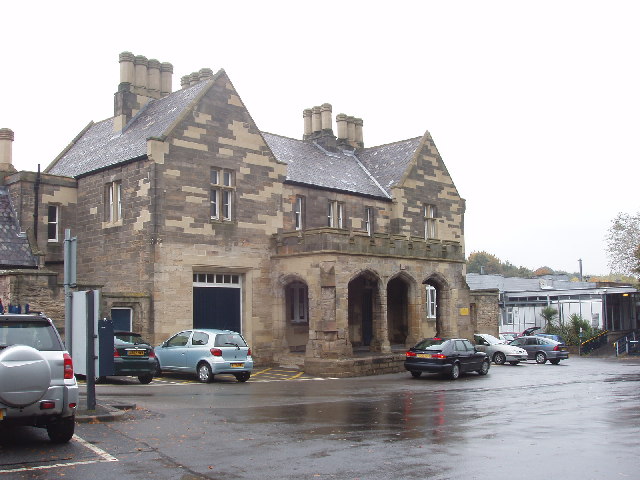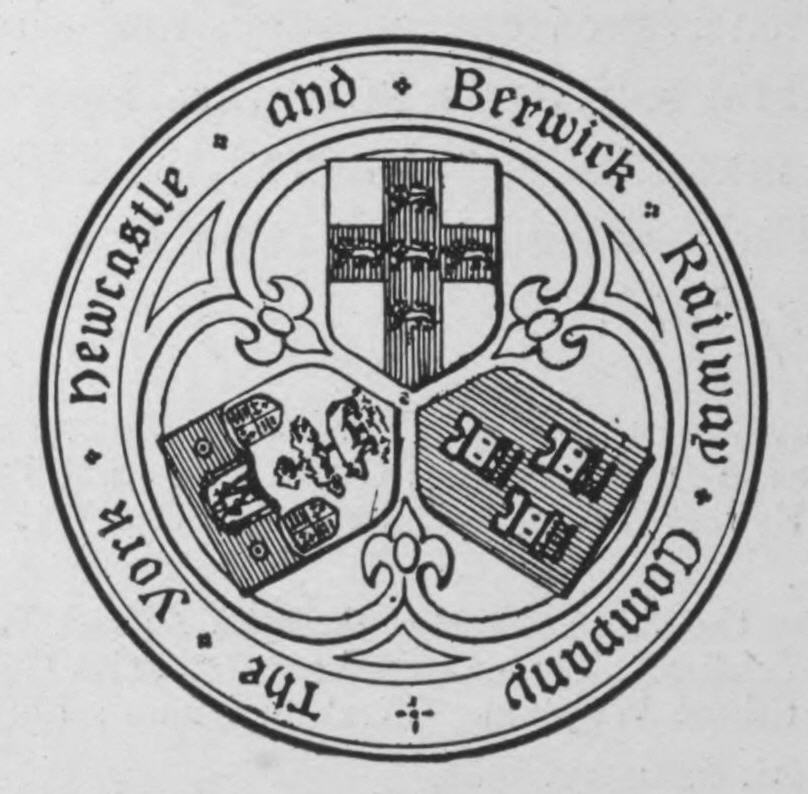|
Belmont Junction Railway Station (Durham)
Belmont Junction railway station was a railway station that served the civil parish of Belmont in County Durham, North East England, from 1844 to 1857. It was located at the junction between the main line and branch of the Newcastle and Darlington Junction Railway. History The station opened as Belmont on 15 April 1844 by the Newcastle & Darlington Junction Railway. It was situated north of the railway bridge over the A690, close to junction 62 of the A1. The station name was changed to Belmont Junction in 1852. The station ceased to have a purpose when the North Eastern Railway opened its branch from to , on which the present day Durham station is located. This station is far closer to the centre of Durham Durham most commonly refers to: *Durham, England, a cathedral city and the county town of County Durham *County Durham, an English county * Durham County, North Carolina, a county in North Carolina, United States *Durham, North Carolina, a city in N ... than the former ... [...More Info...] [...Related Items...] OR: [Wikipedia] [Google] [Baidu] |
Belmont (parish)
Belmont is a suburb forming the north-eastern parts of the city of Durham, England. Belmont Parish covers four old coal mining villages of Belmont, Carrville, Broomside and Gilesgate Moor, which have been joined together by industrial and suburban developments since the 1950s. As such Belmont can be used either to refer narrowly to the old village area, or the wider parish, particularly the parts (Belmont, Carrville and Broomside) to the east of the A1(M) motorway which bisects the area. At the 2011 census, the parish had a population of 8,881. Geography and History Belmont was a largely agricultural area within the parishes of St Giles Church, Durham and Pittington, but industrial developments - mainly coal mining - brought development through the second half of the nineteenth century. A number of collieries were sunk in the area and the largest, Belmont Colliery, took its name from the 1820s-built Belmont Hall (previously and now again known as 'Ramside Hall'). Belmont wa ... [...More Info...] [...Related Items...] OR: [Wikipedia] [Google] [Baidu] |
North Eastern Railway (United Kingdom)
The North Eastern Railway (NER) was an English railway company. It was incorporated in 1854 by the combination of several existing railway companies. Later, it was amalgamated with other railways to form the London and North Eastern Railway at the Grouping in 1923. Its main line survives to the present day as part of the East Coast Main Line between London and Edinburgh. Unlike many other pre-Grouping companies the NER had a relatively compact territory, in which it had a near monopoly. That district extended through Yorkshire, County Durham and Northumberland, with outposts in Westmorland and Cumberland. The only company penetrating its territory was the Hull & Barnsley, which it absorbed shortly before the main grouping. The NER's main line formed the middle link on the Anglo-Scottish "East Coast Main Line" between London and Edinburgh, joining the Great Northern Railway near Doncaster and the North British Railway at Berwick-upon-Tweed. Although primarily a Northern ... [...More Info...] [...Related Items...] OR: [Wikipedia] [Google] [Baidu] |
Railway Stations In Great Britain Closed In 1857
Rail transport (also known as train transport) is a means of transport that transfers passengers and goods on wheeled vehicles running on rails, which are incorporated in tracks. In contrast to road transport, where the vehicles run on a prepared flat surface, rail vehicles (rolling stock) are directionally guided by the tracks on which they run. Tracks usually consist of steel rails, installed on sleepers (ties) set in ballast, on which the rolling stock, usually fitted with metal wheels, moves. Other variations are also possible, such as "slab track", in which the rails are fastened to a concrete foundation resting on a prepared subsurface. Rolling stock in a rail transport system generally encounters lower frictional resistance than rubber-tyred road vehicles, so passenger and freight cars (carriages and wagons) can be coupled into longer trains. The operation is carried out by a railway company, providing transport between train stations or freight customer facil ... [...More Info...] [...Related Items...] OR: [Wikipedia] [Google] [Baidu] |
Railway Stations In Great Britain Opened In 1844
Rail transport (also known as train transport) is a means of transport that transfers passengers and goods on wheeled vehicles running on rails, which are incorporated in tracks. In contrast to road transport, where the vehicles run on a prepared flat surface, rail vehicles (rolling stock) are directionally guided by the tracks on which they run. Tracks usually consist of steel rails, installed on sleepers (ties) set in ballast, on which the rolling stock, usually fitted with metal wheels, moves. Other variations are also possible, such as "slab track", in which the rails are fastened to a concrete foundation resting on a prepared subsurface. Rolling stock in a rail transport system generally encounters lower frictional resistance than rubber-tyred road vehicles, so passenger and freight cars (carriages and wagons) can be coupled into longer trains. The operation is carried out by a railway company, providing transport between train stations or freight customer facili ... [...More Info...] [...Related Items...] OR: [Wikipedia] [Google] [Baidu] |
Former North Eastern Railway (UK) Stations
A former is an object, such as a template, gauge or cutting die, which is used to form something such as a boat's hull. Typically, a former gives shape to a structure that may have complex curvature. A former may become an integral part of the finished structure, as in an aircraft fuselage, or it may be removable, being using in the construction process and then discarded or re-used. Aircraft formers Formers are used in the construction of aircraft fuselage, of which a typical fuselage has a series from the nose to the empennage, typically perpendicular to the longitudinal axis of the aircraft. The primary purpose of formers is to establish the shape of the fuselage and reduce the column length of stringers to prevent instability. Formers are typically attached to longerons, which support the skin of the aircraft. The "former-and-longeron" technique (also called stations and stringers) was adopted from boat construction, and was typical of light aircraft built until the ad ... [...More Info...] [...Related Items...] OR: [Wikipedia] [Google] [Baidu] |
Durham, England
Durham ( , locally ), is a cathedral city and civil parish on the River Wear, County Durham, England. It is an administrative centre of the County Durham District, which is a successor to the historic County Palatine of Durham (which is different to both the ceremonial county and district of County Durham). The settlement was founded over the final resting place of St Cuthbert. Durham Cathedral was a centre of pilgrimage in medieval England while the Durham Castle has been the home of Durham University since 1832. Both built in 11th-century, the buildings were designated as a World Heritage Site by UNESCO in 1986. HM Prison Durham is also located close to the city centre and was built in 1816. Name The name "Durham" comes from the Brythonic element , signifying a hill fort and related to -ton, and the Old Norse , which translates to island.Surtees, R. (1816) ''History and Antiquities of the County Palatine of Durham'' (Classical County Histories) The Lord Bishop of Durh ... [...More Info...] [...Related Items...] OR: [Wikipedia] [Google] [Baidu] |
Durham Railway Station
Durham is a railway station on the East Coast Main Line, which runs between and . The station, situated south of Newcastle, serves the cathedral city of Durham in County Durham, England. It is owned by Network Rail and managed by London North Eastern Railway. It is managed and served frequently by London North Eastern Railway (as a stop on the East Coast Main Line). It is also served by CrossCountry, TransPennine Express and Northern trains. Durham is a through station with two platforms, located north of the city centre, on a hill. South of the station, the railway line is elevated on a viaduct. After a renovation between 2006 and 2008, the original stone station building is now the ticket hall. History The city of Durham has been served by four stations, only one of which survives today: *Shincliffe (called Shincliffe Town from 1861): located in nearby Shincliffe, this station was built in 1839 and was served by the Durham and Sunderland Railway, using rope haula ... [...More Info...] [...Related Items...] OR: [Wikipedia] [Google] [Baidu] |
Newcastle And Darlington Junction Railway
The York, Newcastle and Berwick Railway (YN&BR) was an English railway company formed in 1847 by the amalgamation of the York and Newcastle Railway and the Newcastle and Berwick Railway. Both companies were part of the group of business interests controlled by George Hudson, the so-called ''Railway King''. In collaboration with the York and North Midland Railway and other lines he controlled, he planned that the YN&BR would form the major part of a continuous railway between London and Edinburgh. At this stage the London terminal was Euston Square (nowadays called Euston) and the route was through Normanton. This was the genesis of the East Coast Main Line, but much remained to be done before the present-day route was formed, and the London terminus was altered to King's Cross. The YN&BR completed the plans of its predecessors, including building a central passenger station in Newcastle, the High Level Bridge across the River Tyne, and the viaduct across the River Tweed, that ... [...More Info...] [...Related Items...] OR: [Wikipedia] [Google] [Baidu] |
County Durham
County Durham ( ), officially simply Durham,UK General Acts 1997 c. 23Lieutenancies Act 1997 Schedule 1(3). From legislation.gov.uk, retrieved 6 April 2022. is a ceremonial county in North East England.North East Assembly â€About North East England. Retrieved 30 November 2007. The ceremonial county spawned from the historic County Palatine of Durham in 1853. In 1996, the county gained part of the abolished ceremonial county of Cleveland.Lieutenancies Act 1997 . Retrieved 27 October 2014. The county town is the of |
North East England
North East England is one of nine official regions of England at the first level of ITL for statistical purposes. The region has three current administrative levels below the region level in the region; combined authority, unitary authority or metropolitan district and civil parishes. They are also multiple divisions without administrative functions; ceremonial county, emergency services ( fire-and-rescue and police), built-up areas and historic county. The most populous places in the region are Newcastle upon Tyne (city), Middlesbrough, Sunderland (city), Gateshead, Darlington and Hartlepool. Durham also has city status. History The region's historic importance is displayed by Northumberland's ancient castles, the two World Heritage Sites of Durham Cathedral and Durham Castle, and Hadrian's Wall, one of the frontiers of the Roman Empire. In fact, Roman archaeology can be found widely across the region and a special exhibition based around the Roman Fort of Segedunum ... [...More Info...] [...Related Items...] OR: [Wikipedia] [Google] [Baidu] |







